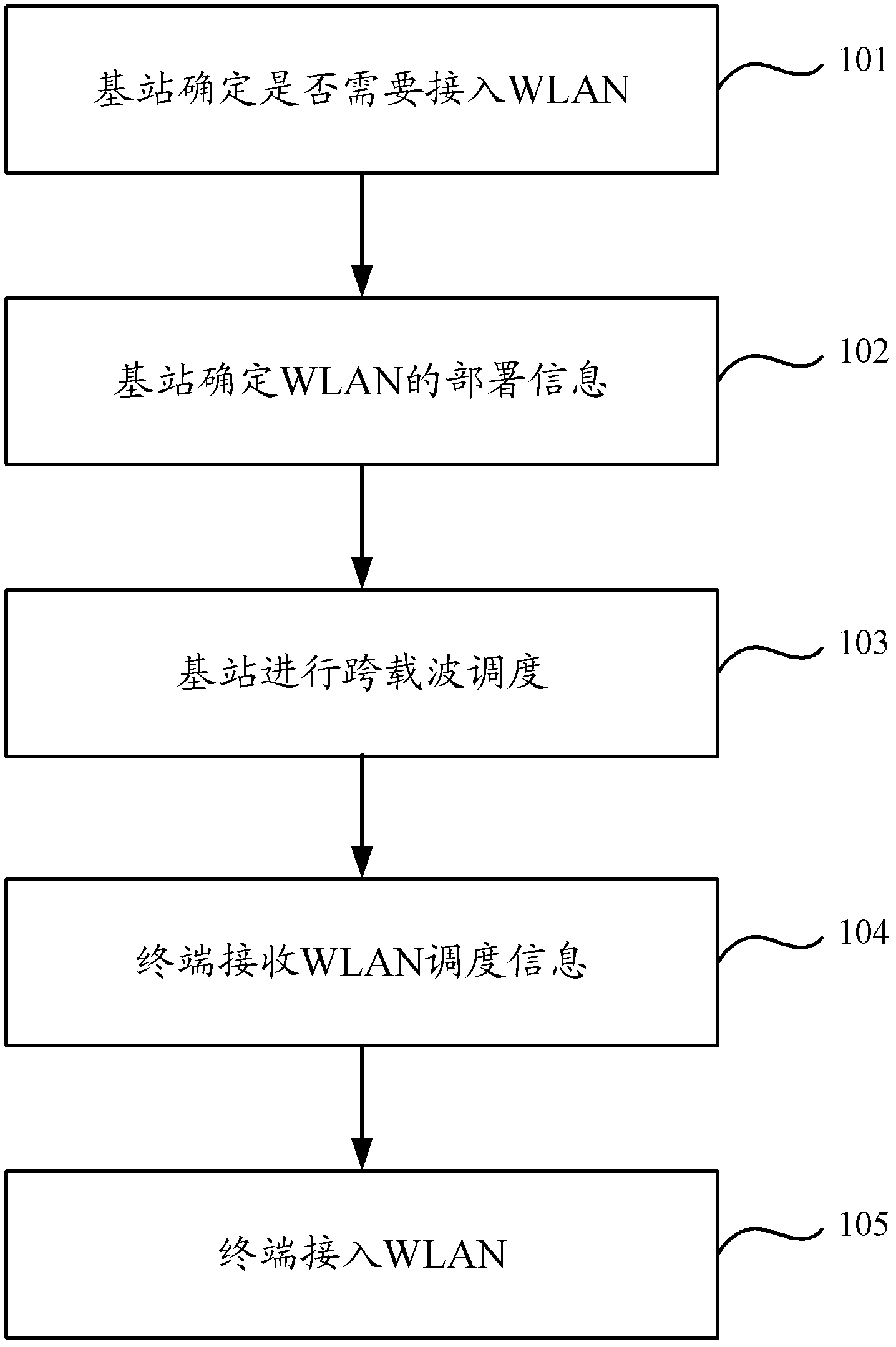Method, base station, terminal and system for cooperative work of wireless local area network (WLAN) and cellular network
A cellular network, collaborative work technology, applied in network topology, network traffic/resource management, connection management, etc., can solve problems such as time-consuming, waste of system resources, affect user service experience, etc., to achieve the effect of improving speed
- Summary
- Abstract
- Description
- Claims
- Application Information
AI Technical Summary
Problems solved by technology
Method used
Image
Examples
Embodiment 1
[0035] Embodiment 1 of the present invention provides a method for cooperating WLAN and cellular network, the process of the method is as follows figure 2 shown, including:
[0036] Step 101, the base station determines whether it needs to access the WLAN.
[0037] In this step, the base station may determine whether the cellular network service needs to be offloaded by using the WLAN, and when it is determined that the cellular network service needs to be offloaded by the WLAN, it is determined that the terminal should access the WLAN.
[0038] Specifically, the base station may, but is not limited to, determine whether the terminal should access the WLAN according to the service type to be executed in the terminal. For example, when the service to be executed in the terminal is an instant messaging service, such as QQ chat, it is determined that the service needs to be offloaded by using the WLAN, that is, it is determined that the terminal should access the WLAN.
[0039...
Embodiment 2
[0072] Embodiment 2 of the present invention provides a base station, and the structure of the base station may be as follows image 3 shown, including:
[0073] The first determining unit 11 is used to determine that the terminal should access the wireless local area network WLAN; the second determining unit 12 is used to determine the deployment information of the WLAN; the sending unit 13 is used to determine the WLAN scheduling information according to the determined WLAN deployment information, and transmit The physical downlink control channel PDCCH of the network sends WLAN scheduling information to the terminal.
[0074] The second determining unit 12 is specifically configured to determine WLAN deployment information in any of the following three ways:
[0075] When it is determined that the terminal should access the WLAN, a request is initiated to the network element storing the deployment information of the WLAN, and the received deployment information of the WLAN...
Embodiment 3
[0079] Embodiment 3 of the present invention provides a terminal, and the structure of the terminal may be as follows Figure 4 shown, including:
[0080] The receiving unit 21 is used to receive the wireless local area network WLAN scheduling information sent by the base station through the physical downlink control channel PDCCH of the cellular network;
[0081] The access unit 22 is configured to access the WLAN according to the WLAN scheduling information.
PUM
 Login to View More
Login to View More Abstract
Description
Claims
Application Information
 Login to View More
Login to View More - R&D
- Intellectual Property
- Life Sciences
- Materials
- Tech Scout
- Unparalleled Data Quality
- Higher Quality Content
- 60% Fewer Hallucinations
Browse by: Latest US Patents, China's latest patents, Technical Efficacy Thesaurus, Application Domain, Technology Topic, Popular Technical Reports.
© 2025 PatSnap. All rights reserved.Legal|Privacy policy|Modern Slavery Act Transparency Statement|Sitemap|About US| Contact US: help@patsnap.com



